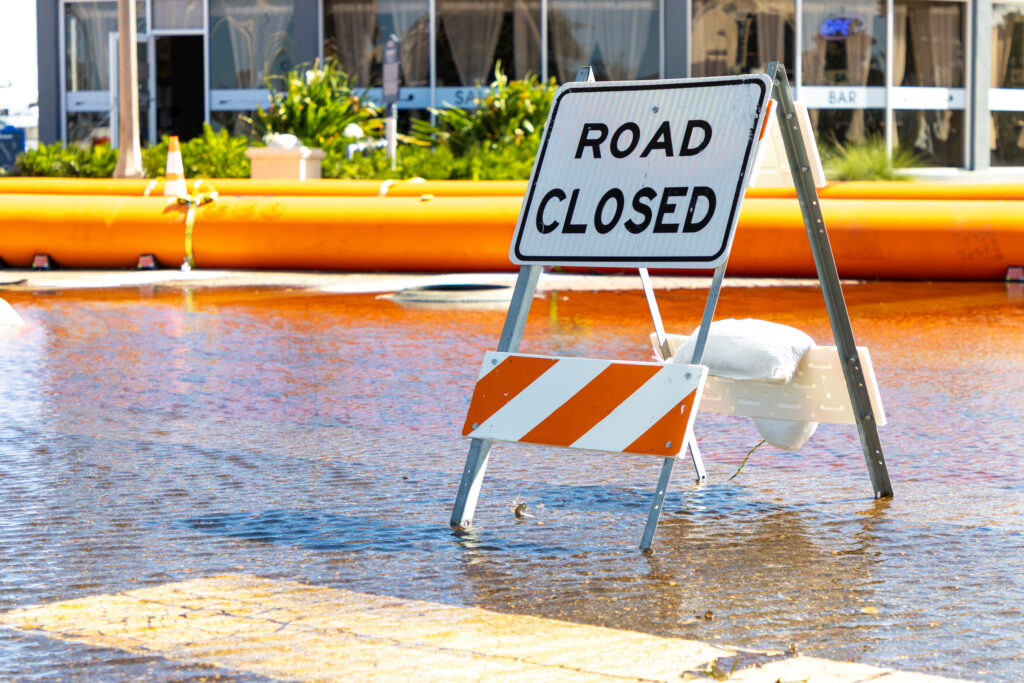By Elizabeth K. Lewis, CPA, Partner

Key Takeaways
- The Financial Accounting Standards Board (FASB) provides a framework for recognizing the effects of involuntary loss of assets due to events like natural disasters.
- Accurate documentation and compliance with accounting standards assist businesses in maintaining financial stability while managing insurance claims for property damage.
- Following the best practices shared in this article allows real estate investors to navigate the complexities of natural disaster accounting and effectively management of losses and recoveries.
Best practices for managing losses and insurance recoveries
Natural disasters such as hurricanes, floods, and other catastrophic events can wreak havoc on real estate assets, bringing not only physical damage but also significant financial implications. For real estate investors, navigating the aftermath of such disasters requires a thorough understanding of accounting standards, loss adjustments, insurance recoveries, and related transactions. This blog explores key considerations and best practices for accounting under these challenging circumstances.
The financial impact of natural disasters
When a natural disaster strikes, the immediate focus is often on the physical damage to buildings, contents, and infrastructure. However, the financial impact is equally critical, involving the recognition of losses, insurance recoveries, and adjustments to financial statements. These processes are governed by intricate accounting standards, such as Accounting Standards Code (ASC) 610-30, which outline how to handle involuntary conversion of assets due to unforeseen events.
Property damage: Involuntary conversion of assets
When assets are destroyed or impaired due to natural disasters, investors must address their accounting implications immediately. ASC 610-30 provides a framework for recognizing the effects of involuntary conversion. Key steps include:
- Involuntary conversion: Occurs when an asset is destroyed, stolen, condemned, or disposed of due to factors beyond the owner’s control and the nonmonetary asset (real estate) is converted to monetary assets (insurance recoveries) for reinvestment. The loss and subsequent recovery are accounted for as two separate units of account.
- Recording insurance recoveries: Expected recoveries from insurance policies should be recorded as an asset once collectability is probable. Receivables are limited by the amount of loss recorded. Proceeds exceeding the recognized losses are considered gain contingencies and should not be recognized until received.
- Recognizing recoveries: Subsequent information related to losses and receipt of insurance proceeds may be considered in analysis related to year-end financial statement adjustment.
- Repair and maintenance expenses: Non-capitalized repair and maintenance costs should follow similar accounting treatment (recognition of a receivable limited by the expense incurred in the period).
Additional considerations for insurance recoveries
Insurance recoveries form a central part of financial management following natural disasters. Proper documentation and adherence to accounting standards are vital to ensure the recovery process aligns with financial stability goals.
Timing of insurance recoveries
An asset for probable insurance recovery cannot be recorded if the coverage is in dispute or if the policy lacks clarity on calculating reimbursable amounts. This means that losses may be recognized in one period, while the associated recovery might be recorded in a later period.
Timing considerations are compounded when insurance proceeds are first transferred to a mortgage lender and subsequently disbursed for reconstruction purposes. Throughout this process, maintaining clear documentation and adhering to the principles of loss recovery accounting ensures accurate financial reporting.
Handling business interruption insurance
Business interruption insurance is vital in mitigating revenue loss during disruptions. However, it’s important to note that anticipated recoveries for lost revenue are considered gain contingencies, meaning they should only be recognized once received from the insurer.
Ensuring policy viability and claims history
The viability of insurance carriers and prior claims history are essential considerations for real estate investors dealing with natural disaster accounting. Insurance through a national, financially strong, and viable company suggests a high likelihood of collecting on the policies.
Best practices for real estate investors
To navigate the complexities of natural disaster accounting, real estate investors should adhere to best practices that ensure effective management of losses and recoveries. Key recommendations include:
- Thorough documentation: Maintain detailed records of insurance policies, claims, escrows, and adjustments to guarantee traceability and compliance.
- Clear communication: Engage actively with insurance brokers, adjusters, and lenders to resolve disputes and ensure alignment on policy terms.
- Adherence to standards: Follow relevant accounting standards, such as ASC 610-30, to ensure proper recognition and disclosure of losses and recoveries.
- Assessment of carrier viability: Evaluate the financial strength and reliability of insurance carriers to mitigate risks associated with claims.
- Focus on timing: Carefully time the recognition of claims and recoveries to align with cash receipts and policy terms.
Conclusion
Natural disasters present significant challenges, both operationally and financially. By adhering to established accounting frameworks, organizations can ensure that losses are properly accounted for while maximizing recoveries through insurance. A thorough understanding of accounting standards, alongside meticulous documentation and communication with stakeholders, lays the groundwork for resilience in the face of unforeseen events. Whether dealing with property damages, business interruptions, or tenant displacements, a methodical and transparent approach is key to navigating the complexities of disaster-related accounting.
Questions on natural disaster accounting and reporting for your real estate asset? Contact your Keiter Opportunity Advisor or Email | 804.747.0000
About the Author
The information contained within this article is provided for informational purposes only and is current as of the date published. Online readers are advised not to act upon this information without seeking the service of a professional accountant, as this article is not a substitute for obtaining accounting, tax, or financial advice from a professional accountant.



